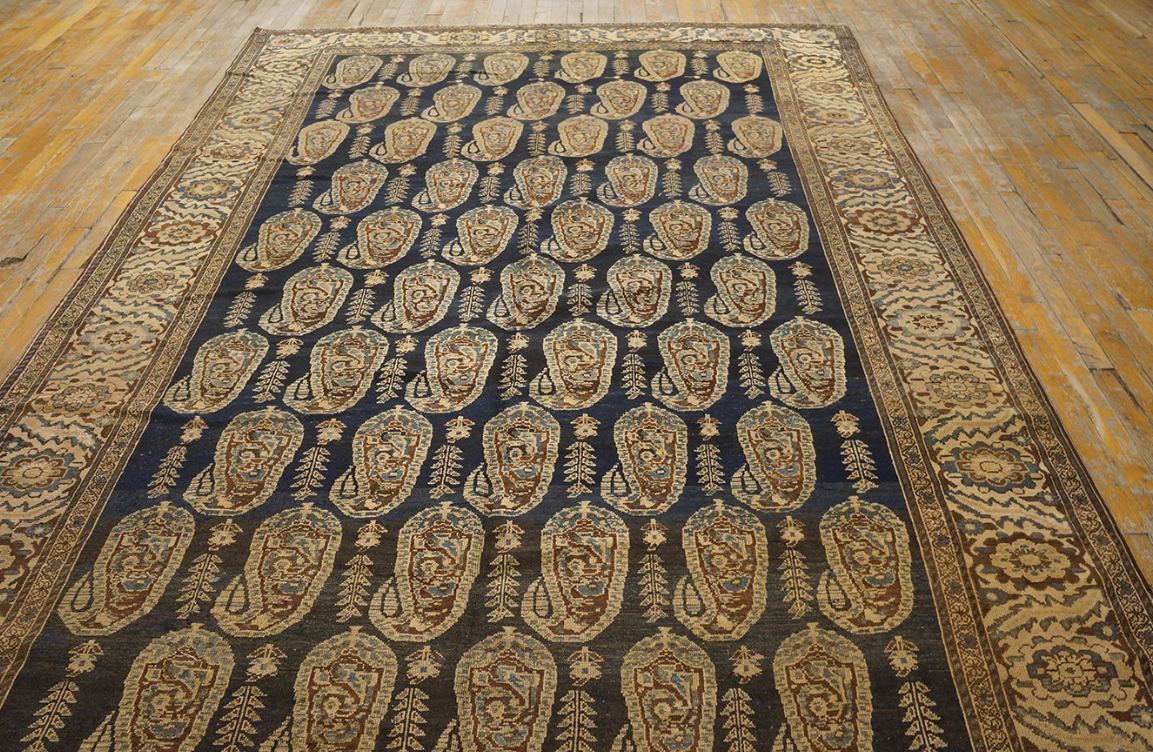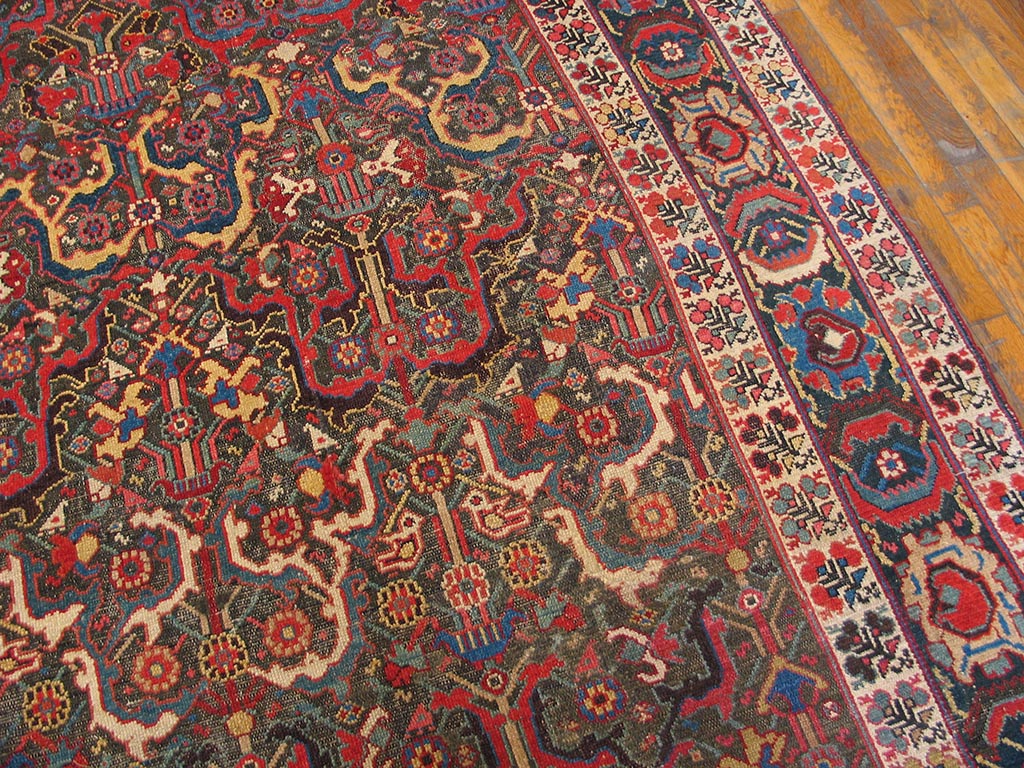Montpoupon is a fortified castle destroyed during the hundred years war, and rebuilt during the Renaissance by the Prie family. The chateau has been inhabited by the same family since 1857.
An open window illuminates the interior’s history and creates its own atmospheric lighting in this little bedroom.
The dark wood and navy carpet combined exude a moody vibe – which is amplified by the light of the single window.
The space features a NW Persian carpet with an all over boteh design, which is quite incredible to find a pair for – and it just so happens that we have exactly that in our inventory.
Navy combined with softer blues and neutrals make this traditional design a strong, yet easy going choice.
Here’s the goods to make you feel like the King of your own castle:
NW Persian
7’0″ x 11’6″
circa 1850
Check out some detail images to better view the nuances of this mid 19th century masterpiece. The subtle ahbrash of color within the rug is such a compelling feature.








View this carpet on our website, or contact us to see it in person!














